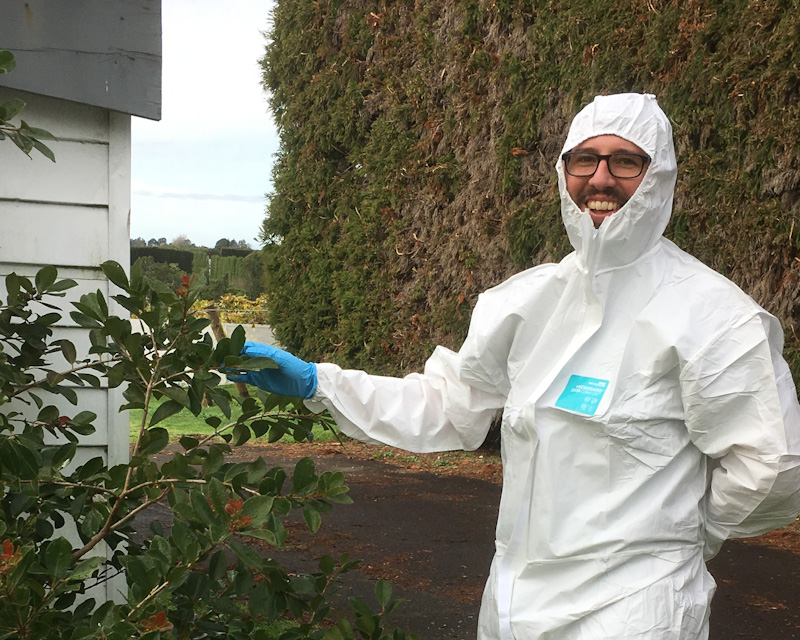A new researcher takes the reins at Scion
Dr Stuart Fraser is in the thick of his first field season leading the myrtle rust team at Scion. We sat down with him to get his insights on the disease in Aotearoa and abroad.

The first time Stuart realised the devastation myrtle rust can cause was on a field trip, during his post-doc in South Africa.
“We visited a native forest with a group of keen amateur botanists on the south coast, near Durban. We did not know whether myrtle rust was there or not,” Stuart says.
“When we crossed some grassland and got down towards the forest edge it looked like there had been a fire along the forest margin, but it was the impact of myrtle rust which was causing dieback on the native Eugenia. It was a very depressing moment.”
Stuart was at the University of Pretoria from 2015-2017 and can remember specimens arriving from New Zealand, from the very first myrtle rust incursion.
They were sent over for genotyping – a process where scientists examine the DNA of one sample and compare it to another, to figure out which “biotype” or “strain” they have. There are several different strains of myrtle rust, all of which have different effects in different environments.
Stuart’s lab realised the strain that had arrived in New Zealand was the ‘pandemic’ biotype – the most widely distributed around the world.
Shortly after the diagnosis Stuart was recruited to the central North Island by Scion, where it didn’t take long for him to get involved in the myrtle rust response.
The forest pathologist describes rusts as “fascinating organisms”.
“They are biotrophic, meaning they can only survive on living plant material. They infect plants directly through the cuticle (leaf surface) or through stomata and then produce structures called haustoria within living plant cells to extract the nutrients they need.
“To do this, rust fungi break through the plant cell walls, but they leave cell membranes intact. If the host plant cell is killed, then the rust can no longer extract nutrients and will die. Plants can use this to their advantage; if the plant detects the fungus it can kill its own cells, surrounding and containing it. This is termed the hypersensitive response.”
Rusts often have narrow host ranges, sometimes being restricted to a single species. In comparison myrtle rust has a very broad host range, and no-one is yet certain why.
Having been Scion’s lead myrtle rust researcher for almost six months now, Stuart says his job is made easy by the talented and experienced group of researchers.
“I try and give guidance where I can, give the team the space to do their work, make linkages between projects where possible, and look for opportunities for us to expand and extend our research,” he says.
The Englishman is enjoying learning more about New Zealand ecology through his projects and says interacting with mana whenua has been “a revelation”.
“It’s changed how I think about native plants and animals and how I think research should be done going forward – in partnership with communities.
“Having seen first-hand the damage done by myrtle rust in South Africa and Australia I know how serious this disease can be and how important it is for us to help find management solutions for New Zealand.”
You can find out more about Stuart’s research with Beyond Myrtle Rust here.
Posted January 2020